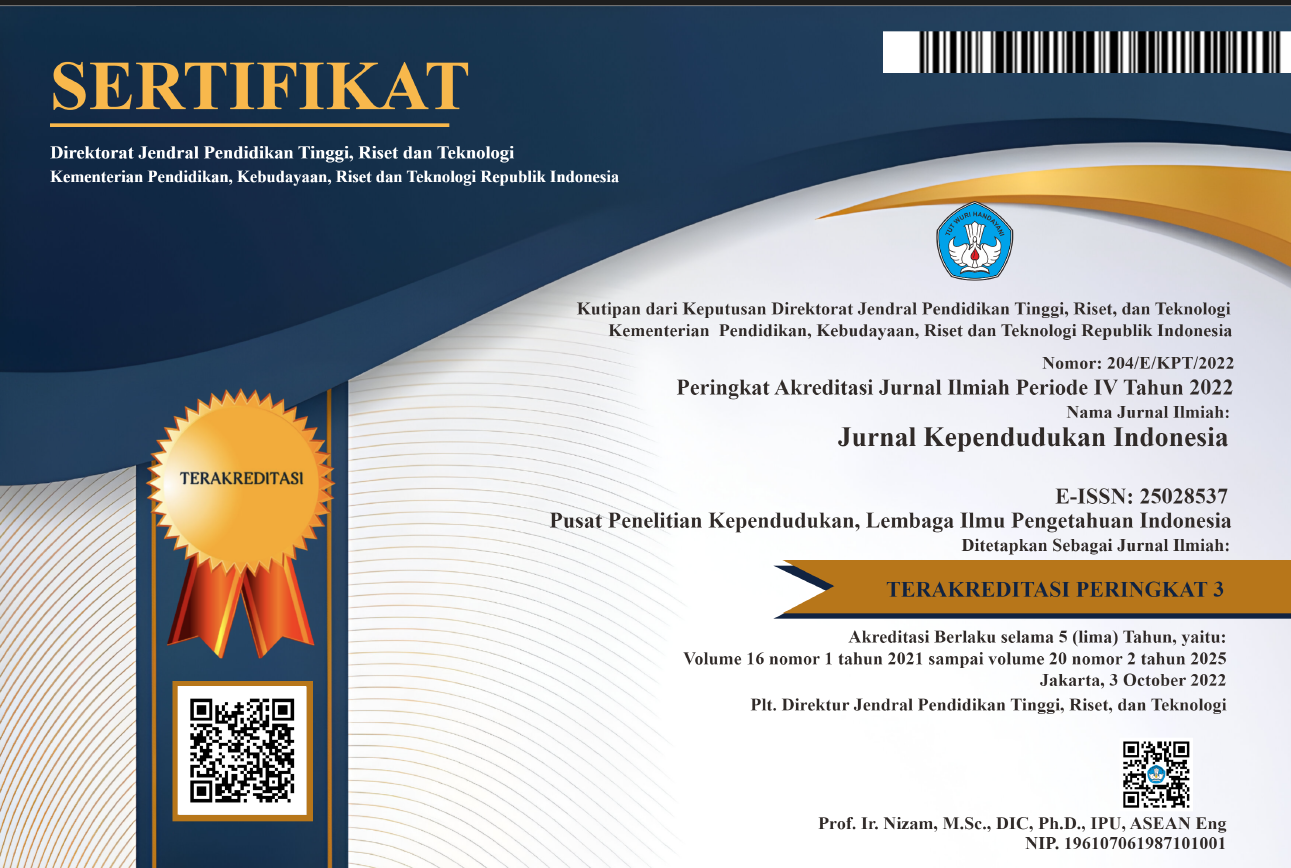Fertilitas remaja di Indonesia: perbandingan antara wilayah perdesaan dan perkotaan
DOI:
https://doi.org/10.55981/jki.2023.4880Keywords:
adolescent fertility, rural, urbanAbstract
This paper aims to determine the characteristics of Indonesian women who experience adolescent fertility and to differentiate its determinants between rural and urban areas. Adolescent fertility is defined as the incidence of adolescents aged 15–19 years who have experienced a live birth or are pregnant with their first child. Using data from the 2017 Indonesian Demographic and Health Survey (IDHS), this study applies descriptive analysis and binary logistic regression for data analysis. The results of this study showed that the incidence of adolescent fertility was higher in rural areas than in urban areas. Education, wealth, exposure to the media, and knowledge of contraceptive methods have significant effects on adolescent fertility in both rural and urban areas. Adolescent fertility is more likely to occur in young girls with low education, coming from poor families, not exposed to the media, and with knowledge about contraceptives. However, the influence of each of these factors is greater in rural areas than in urban areas. Furthermore, the level of education of adolescent girls is the strongest predictor of influencing the incidence of adolescent fertility in both rural and urban areas. The lower the education of adolescent girls, the greater their risk of experiencing adolescent fertility.
Downloads
Published
How to Cite
Issue
Section
License
Copyright (c) 2023 Hanik Stiyaningsih

This work is licensed under a Creative Commons Attribution-ShareAlike 4.0 International License.

